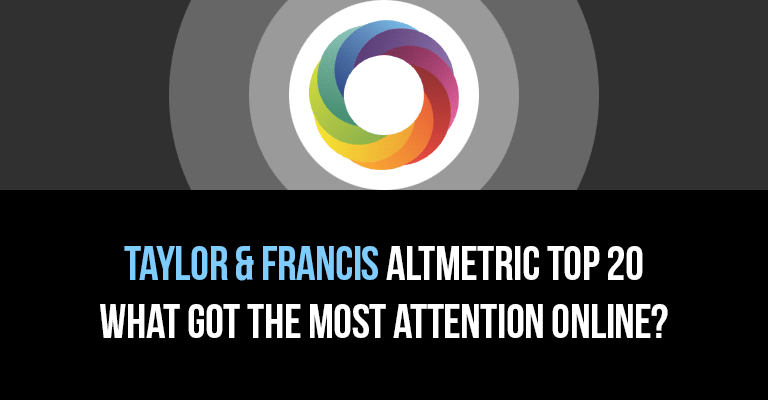Research and its real world implications: the Taylor & Francis Altmetric top 20


Psychology, animal welfare, agricultural sustainability, defence analysis, palaeontology, higher education research, neuroscience, toxicology, ecology, nutrition. It’s a diverse list but what brings all these different areas of research together? Every one (plus more) is covered in a list of the 20 original research articles with the highest Altmetric scores, published across Taylor & Francis Group journals.
The sheer diversity of this list highlights the enormous variety of research published, but also shows that any article has the potential to gain attention online; be this via a blog, social media, or picked up by news outlets. We’re an engaged lot and if something fires the imagination (and encourages debate) it’s exciting to see just how quickly the snowball effect can begin. But what makes one journal article get picked up in this way? It’s a magic formula that isn’t always clear – is it subject matter, an effective title, a ‘hot’ topic, renowned authors, or a combination of any, all or none of these?
With Altmetric data recently added to Taylor & Francis Online and CogentOA, we had the opportunity to look at which articles, dating back to January 2012, had the highest Altmetric scores (articles published from this date now feature the Altmetric donut within the journal’s table of contents, on individual article pages and, on Taylor & Francis Online, for all authors within their My Authored Works account). We gathered these together into a ‘top 20’ list. Looking at the final list raised the question ‘why this article over another?’
To try and answer this, I asked the authors featured in the list why they thought their article had gained so much attention. Their responses were varied, and I’ve included just a few snippets here:
“…people are anxious to find out how technology is impacting relationships because its use is so ubiquitous; we are just beginning to uncover the real-life impact of our increased use of technology for communication in our intimate relationships…”
Lori Schade, licensed marriage and family therapist and adjunct faculty at Brigham Young University, Utah and co-author of ‘Using Technology to Connect in Romantic Relationships: Effects on Attachment, Relationship Satisfaction, and Stability in Emerging Adults’ (no.18 in our list)
“…it shows how we can apply our scientific knowledge…to policy forums. This is a type of translational science, applying our scientific knowledge to improving animal welfare and management practices.”
Diana Reiss, Professor, Department of Psychology, City University of New York and co-author of ‘A Veterinary and Behavioral Analysis of Dolphin Killing Methods Currently Used in the “Drive Hunt” in Taiji, Japan’ (no.1 on our list)
“…most people are unaware that this organochlorine compound causes numerous adverse biological effects. The large number of downloads has raised awareness among scientists and the general public about safety and health concerns…”
Susan S. Schiffman, Department of Electrical and Computer Engineering, College of Engineering, North Carolina State University and co-author of ‘Sucralose, A Synthetic Organochlorine Sweetener: Overview Of Biological Issues’ (no.16 in our list)
Reading through their responses, what came across strongly was the importance of ‘real world’ implications for their research. Whether it was on GM crops or cyber attacks, childhood amnesia or the impact of technology on relationships, each of the articles explored a topic relevant to our everyday lives. This list highlights, as I’m going to steal from the excellent Ontario project, that ‘research matters’, not just in the lab or the lecture theatre, at a conference, or when drafting and re-drafting a paper, but in the real world and to real people.
Congratulations, and thank you, to all the authors who featured in the ‘top 20’ and then very kindly sent me their thoughts. I’m looking forward to seeing what’s on the list when we run it again next year, but the one thing I do know is that it will be just as diverse again, with just as many ‘real world’ implications and applications. Now that’s what I call impact.
Register here to receive the latest news and updates from Altmetric
